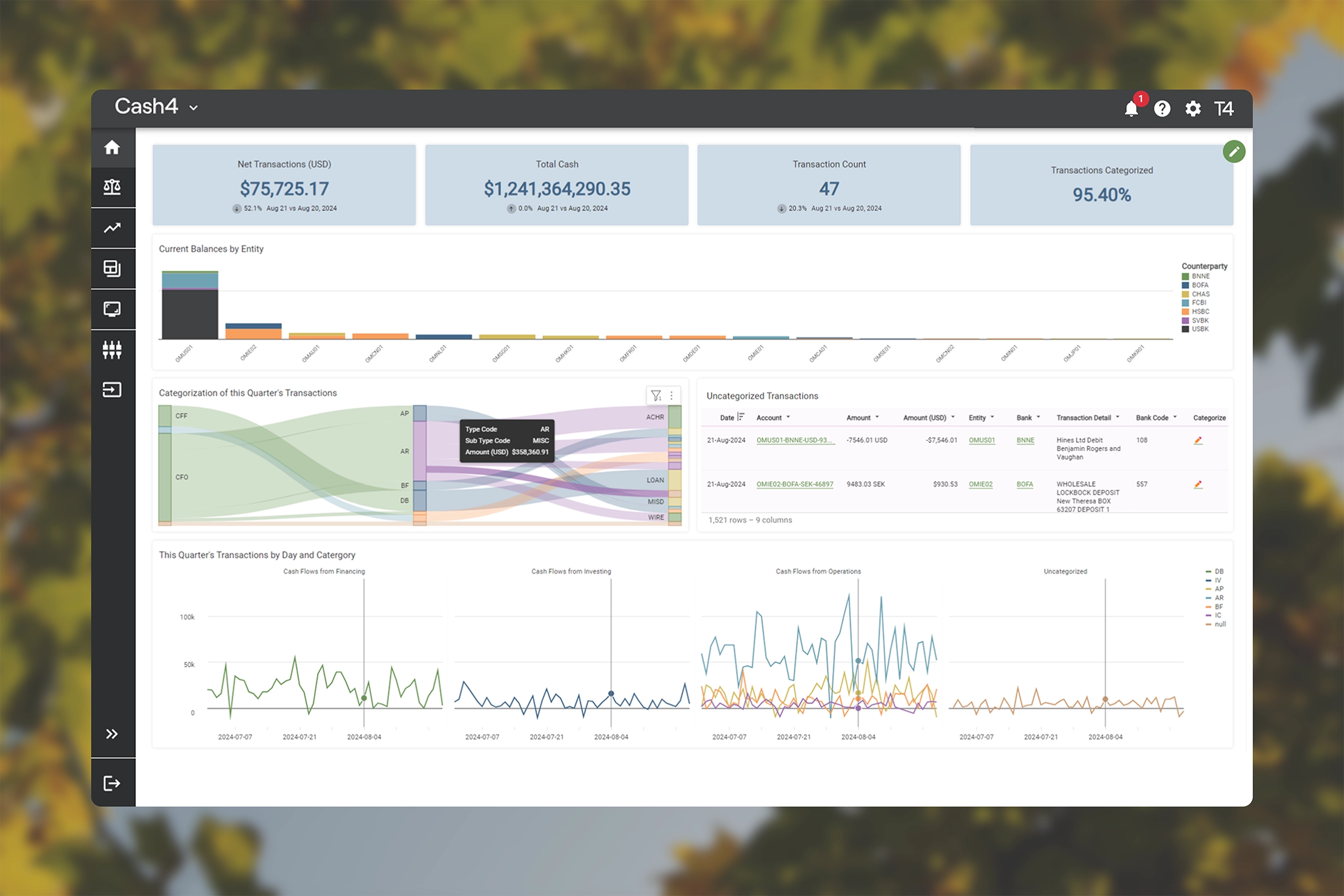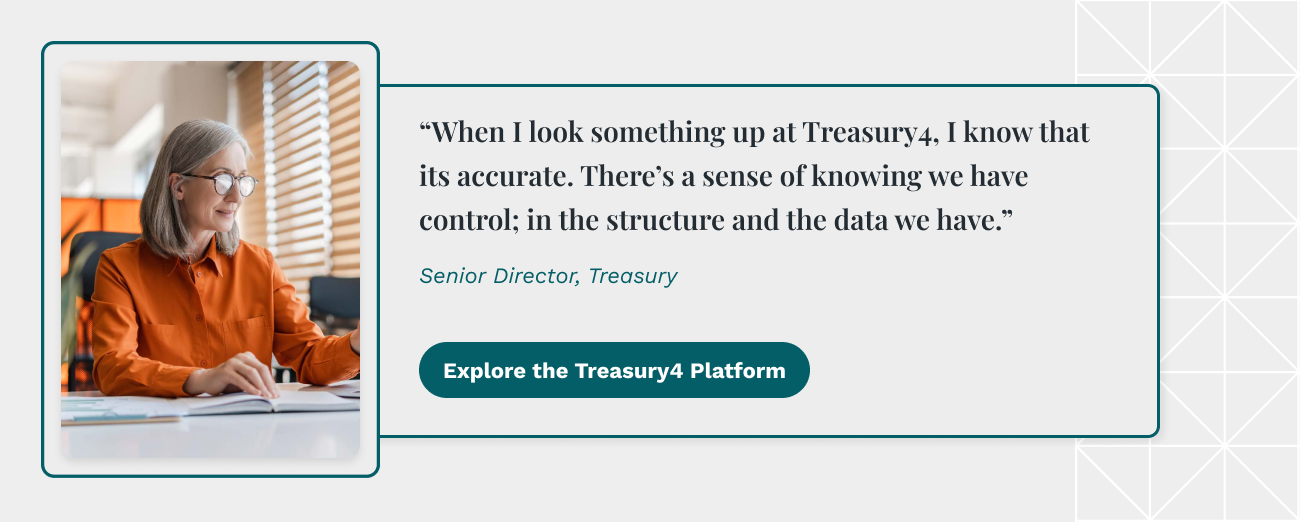How to Optimize Cash Flow with Proactive Forecasting
On Monday, October 19, 1987, the global stock market unexpectedly crashed. The event later known as Black Monday resulted in an estimated $1.7 trillion loss worldwide.
In its aftermath, businesses in every industry struggled to keep enough cash on hand. Then-CEO of Volvo, Pehr G. Gyllenhammar, popularized the expression that neatly summarized the prevailing sentiment: "Cash is king."
This remains true for companies regardless of the state of the global economy. Finance leaders who prioritize cash flow management can help their businesses:
One of the most effective tools for effective cash flow management is proactive cash forecasting. In this article, we’ll explore how you can ensure accurate and reliable cash forecasts for your business, along with challenges you’ll face and best practices to overcome them.

What is cash forecasting?
Cash forecasting is the process of projecting a company's future cash inflows and outflows over a specific time period. It involves estimating when and how much cash will be received from sales, accounts receivable, investments, and other sources. It also estimates the timing and amounts of cash expenditures like payroll, accounts payable, debt payments, and other expenses.
The goal of cash forecasting is to predict potential cash shortages or surpluses in advance. This way companies can plan accordingly, to manage their cash and working capital more effectively and invest excess liquidity.
Having sufficient cash on hand is essential for funding a company's operations and paying its bills and obligations.
Businesses can also face liquidity issues due to timing, which can result in difficulty paying employees/suppliers, unnecessary overdraft charges, and even bankruptcy. The principle of cash flow matching is critical, as it ensures that the timing of the inflows and outflows of the business correlate and that investing or borrowing decisions are made to adjust any mismatches.
Cash forecasting can be a powerful tool for strategic financial planning and contingency management. For example, if a travel business can prepare in advance for the effects a potential natural disaster on its revenue, the business is in a much better position to handle such a challenge when it arises.
The importance of data quality in cash forecasting
The process of cash forecasting involves looking at patterns of cash inflows and outflows to predict what will happen in the future. As with any other data-reliant process, the outcome depends heavily on the quality of data you work with.
Here’s are some factors that can lower the quality of your financial data and impact the accuracy of your cash forecasts:
- Incomplete data. Missing source data for sales, purchases, payroll, or other transactions can throw off your cash inflow and outflow projections, making it impossible to precisely model reality during cash forecasting.
- Outdated numbers. Forecasting relies on timely updates to source data. For instance, new and settled transactions must be properly reflected to create an accurate forecast.
- Poor data integrity and transparency. If your finance data is stored in silos across departments, it can be hard to understand which data is the most accurate reflection of your business’s cash flows. A lack of integration between your enterprise resource planning (ERP), CRMs, and other software can often lead to misaligned cash flow data.
- Inconsistent data practices. The way your business manages financial data entry transfers can affect the quality of the data used for cash forecasting. Differing owners also often results in varying practices.
To ensure the most accurate cash forecasts possible, you can take the following steps to increase the quality of your financial data:
- Integrate your software solutions via APIs or implement data warehouses to keep your data unified
- Automate transaction processing, approvals, reconciliation and reporting where possible — eliminating manual data entry significantly reduces risk of human error
- Use exception reporting to identify and fix errors and anomalies
- Complete regular audits of your financial data and processes
- Implement data governance policies and train employees thoroughly and regularly to ensure adherence
These tasks can be done quickly and easily if you implement a cash management solution with built-in integration, automation, and reporting features, such as Cash4.

How to integrate disparate data sources
One of the key practices to ensure accurate, up-to-date, and high-quality financial data is to integrate your data sources — that is, to automatically bring data from relevant sources into a unified database.
A business with a fully integrated financial database ensures that its finance professionals have a comprehensive, accurate view of the company’s cash, projected activity and financial exposures across all accounts and entities.
Without integrated data, treasurers are left with fragmented silos of information reported from various sources that make cash forecasting — along with liquidity analysis, risk management, and strategic decision-making — extremely difficult.
Integrating your financial data is no small task, however. Finance professionals face several key challenges when integrating financial data from disparate sources, including:
- Standardizing data. Different sources and entities mean different formats, taxonomies, currencies, and other variations that need to be carefully mapped and converted into a meaningful unified system.
- Poor data quality. Not all sources of data are made equal when it comes to quality. Some sources may offer truncated or otherwise incomplete or erroneous information that undermines your data integrity project.
- Incompatible systems. Relying on legacy systems or homegrown applications for handling financial data can cause compatibility issues during integration. These issues can be exacerbated by a lack of automated data exchanges as well.
- Governance and controls. The lack of defined data governance policies, owners, and controls across the organization can impede integration efforts.
- Scalability and performance. As volumes of financial data grow, integration solutions must be able to scale efficiently without bottlenecks.
To overcome and mitigate the effects of these challenges, your finance team can:
- Establish an enterprise data governance framework with clear policies, standards, and accountability
- Implement master data management with a solution like Cash4 to create a single source of truth and consistent processes for critical data throughout the organization
- Utilize data integration tools and ETL processes to extract, transform, and load data automatically
- Leverage data warehouses or lakes to create an integrated repository of financial information
- Invest in integrating APIs and modern integration platforms to connect your systems
- Include data quality monitoring, cleansing, and stewardship as part of integration initiatives
- Prioritize integration for key data and systems first, then expand your scope to include entities used less often or involving less activity
Choosing the right cash forecasting solution
To prioritize accurate, reliable cash forecasts, your finance team will likely need to invest in a world class cash management and forecasting software solution. Here’s a brief list of features to keep in mind as you shop:
- Automated data collection and reporting is key. Your cash management solution should eliminate, or at least minimize, the need for manual data entry.
- Quick transaction research. The solution should let you look for specific transactions as well as groups of transactions by type, account, amount, and more. The structure of how the data is stored is key.
- Data visualization. Looking at a clean spreadsheet isn't the same as looking at a single page of charts that tell a concise and specific data story. The latter can help finance leaders make important strategic decisions, fast. Ensure that your cash management software can easily generate digestible and accurate reports for your day-to-day tasks and decisions.
- Reporting on the metrics you need. Make sure you can automatically generate the reports your business relies on. This can include specific metrics like Cash Flow from Operations (CFO), and Free Cash Flow (FCF), as well as other reports specific to your industry or your business.
- Intuitive categorization options. Categorization is key for standardizing the data that comes from disparate sources, and financial data categories can be varied and complex. Your chosen solution will need to allow for complex categories while remaining intuitive and easy to use.
Make cash management fast and easy with Treasury4
As a finance leader, one mistake you don’t want to make is to rely on outdated software. The reliability of your cash forecasts are only as good as the data used to create them, the design of the platform storing the data and the visualization and reporting it can provide.
Cash4 provides finance teams with a comprehensive cash management system. In addition to making your cash forecasts reliable and easy to create, you can also:
- Eliminate bank portal downloads
- Leverage automated rule-based categorization
- Research transactions in just one click
- Create interactive cash flow reports
- Get integrated investments reporting
- Visualize cash flow data
- Secure your sensitive financial data
